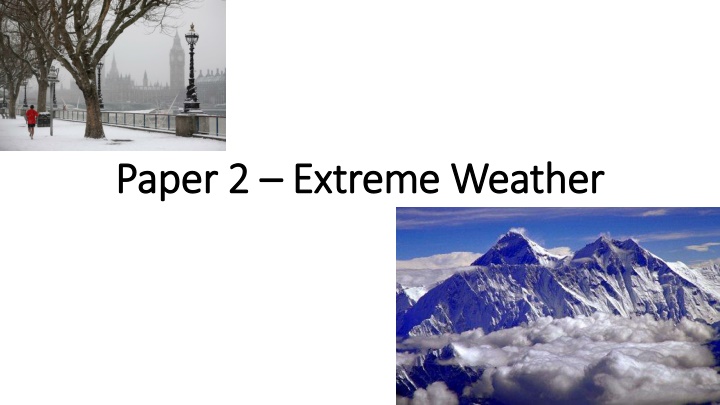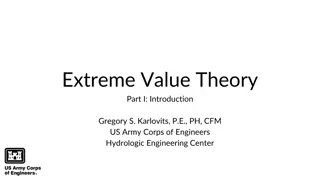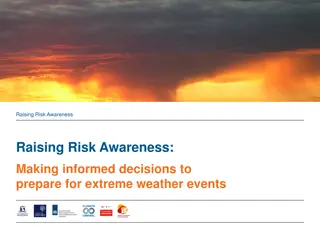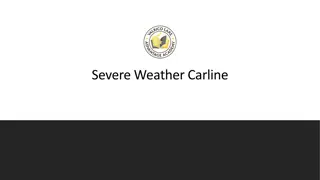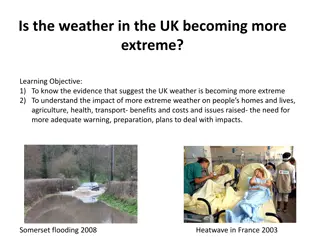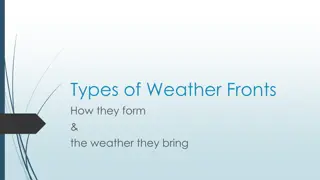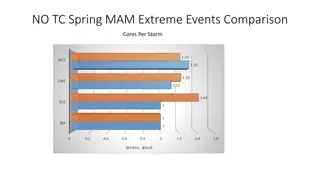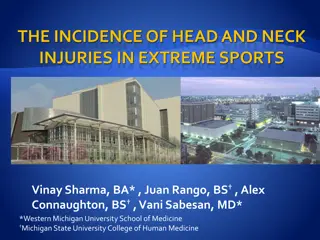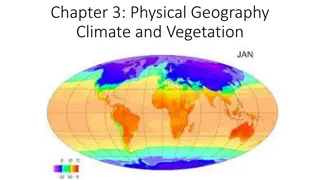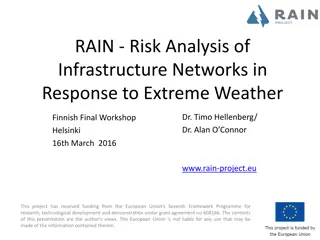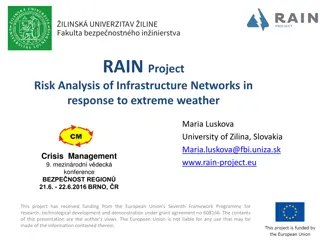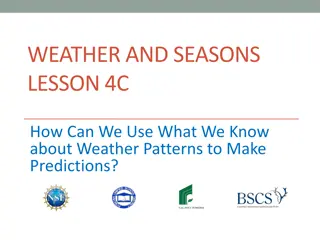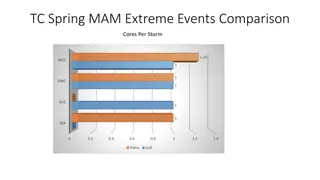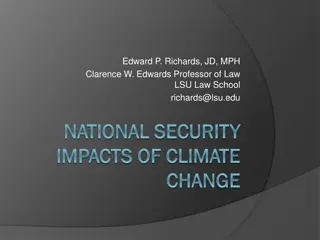Analysing Different Perspectives on Extreme Weather Events
This content provides a structured approach to analyzing and comparing two sources on extreme weather events. It includes questions, paragraph formats, language analysis, and techniques for comparing writer's ideas and perspectives. The focus is on identifying, interpreting, and synthesizing information from the sources to showcase a detailed understanding of the topic.
Download Presentation

Please find below an Image/Link to download the presentation.
The content on the website is provided AS IS for your information and personal use only. It may not be sold, licensed, or shared on other websites without obtaining consent from the author.If you encounter any issues during the download, it is possible that the publisher has removed the file from their server.
You are allowed to download the files provided on this website for personal or commercial use, subject to the condition that they are used lawfully. All files are the property of their respective owners.
The content on the website is provided AS IS for your information and personal use only. It may not be sold, licensed, or shared on other websites without obtaining consent from the author.
E N D
Presentation Transcript
Paper 2 Paper 2 Extreme Weather Extreme Weather
QUESTION MARKS MINS Read the questions and annotate source 0 10 Question 1 True or False 4 5 Question 2 - Select and Synthesise Source A 3 PEE paragraphs Comparative Connective: However, Whereas, In contrast, Source B 3 PEE paragraphs Comparative Overview 8 10-12 Question 3 Language Analysis 4 Technique, Evidence, Effect paragraphs word classes and phrases paragraphs on language features paragraphs on sentence forms 12 10-15 Question 4 Compare Writers Ideas and Perspectives Overview comparative statement about theme in sources identify text type/content/tone/purpose/narrative mode of each source Source A - Point Evidence Technique word classes and phrases, language features and techniques, sentence forms and structure Explanation Source B - Comparative/Contrastive Point: On the other hand, Source B Evidence Technique word classes and phrases, language features and techniques, sentence forms and structure Explanation ESSENTIALLY, IT S 6 PETER PARAGRAPHS 3 PETER PARAGRAPHS FOR EACH SOURCE 16 15-20
Question 1 Question 1 - - Answers Answers
Paragraph Format Source A 3 PEE paragraphs Comparative Connective: However, Whereas, In contrast, Source B 3 PEE paragraphs Comparative Overview
QUESTION 2: AO1: Identify, Interpret, Select QUESTION 2: AO1: Identify, Interpret, Select and Synthesise and Synthesise Level Level 4 Shows a detailed understanding of differences between the texts Offers perceptive interpretation of both texts Synthesises evidence between texts Selects a range of judicious quotations from both texts Skill Descriptors Perceptive, detailed 7-8 marks Level 3 Shows a clear understanding of differences between the texts Begins to interpret both texts Demonstrates clear connections between texts Selects relevant quotations/references from both texts to support response Clear, relevant 5-6 marks Level 2 Identifies some differences between the texts Attempts some inference from one/both texts Attempts to link evidence between texts Selects some quotations/references; not always supporting (from one/both texts) Some, attempts 3-4 marks Level 1 Shows simple awareness of difference(s) Offers paraphrase rather than inference Makes simple or no links between texts Simple reference or textual details from one/both texts Simple, limited 1-2 marks Level 0 No marks Candidates in this band will not have offered any differences Nothing to reward
LEVEL? LEVEL? In Source A, eight climbers are killed in the storm, but in Source B no one is killed, so the effects of the weather are different. Someone gets a frozen beard in Source B. Level Level 4 Perceptive, detailed 7-8 marks Level 3 Clear, relevant 5-6 marks Level 2 Some, attempts 3-4 marks Level 1 Simple, limited 1-2 marks Level 0 No marks BE THE EXAMINER Use the criteria to level this response. How many marks would you give it out of 8? How could the student improve this response?
In Source A, when the storm arrives it traps thirty climbers in the DeathZone and after a night from hell , eight of them die. This is different to Source B because no one is killed because of the weather. The snow makes the writer s beard freeze and everyone has to put warm clothes on, but that s it. In Source A the weather has a dangerous effect on the people but in Source B it is not really a problem. LEVEL? LEVEL? Level Level 4 Perceptive, detailed 7-8 marks Level 3 Clear, relevant 5-6 marks Level 2 Some, attempts 3-4 marks Level 1 Simple, limited 1-2 marks Level 0 No marks BE THE EXAMINER Use the criteria to level this response. How many marks would you give it out of 8? How could the student improve this response?
Source A shows the effect that a sudden storm can have on the people on Mount Everest, for example, thirty climbers become trapped in the DeathZone , fighting for their lives. Three Indian climbers are stranded, exhausted and with their oxygen supplies running out , which suggests that the weather has taken them by surprise because they are obviously not prepared for the storm. By the end of the following day eight people have been killed and from this we can infer that the weather can be fatal: if people don t have shelter they will die. However in Source B the weather is not dangerous. It does result in people wearing extra layers of clothing and some even stay indoors, but those who do go out only have to blow on their fingers and stamp their feet to keep the cold out. The main difference between the effects in Source A and those in Source B is that the storm on Everest can kill people but in London the snow is more likely to just freeze your beard or turn your hair white. LEVEL? LEVEL? Level Level 4 Perceptive, detailed 7-8 marks Level 3 Clear, relevant 5-6 marks Level 2 Some, attempts 3-4 marks Level 1 Simple, limited 1-2 marks Level 0 No marks BE THE EXAMINER Use the criteria to level this response. How many marks would you give it out of 8? How could the student improve this response?
Source A conveys the horrific consequences of a sudden storm on Mount Everest when thirty climbers become trapped in the DeathZone and are left exposed and fighting for their lives . Three Indian climbers are stranded, exhausted and with their oxygen supplies running out , which suggests that they were caught unawares by the unexpected severity of the weather. Maybe more significantly, two commercial expeditions were strung out between the South Col and the summit , showing the weather attacks both recreational climbers and business enterprises, who would consider the safety of their clients as important. This implies the effects are catastrophic for even the most prepared of people because there were eight fatalities: the greatest loss of life in any twenty-four hour period on the peak . This is different to Source B which focuses on a less traumatic event: a heavy snowfall in London in the 1800s. The people are cold and wrapped in thickcoats but the effects are not life-threatening. Even the homeless girl who sleeps on a step is only cold as a frog rather than hypothermic. Most people stay inside but those who do venture out are suffering little more than frozen beards, headaches and cold fingers. Overall, the people in Source B have some sense of control over the weather and it merely inconveniences their daily lives, whereas in Source A, it exposes the vulnerability of the climbers and is life-threatening LEVEL? LEVEL? Level Level 4 Perceptive, detailed 7-8 marks Level 3 Clear, relevant 5-6 marks Level 2 Some, attempts 3-4 marks Level 1 Simple, limited 1-2 marks Level 0 No marks BE THE EXAMINER Use the criteria to level this response. How many marks would you give it out of 8? How could the student improve this response?
QUESTION 2: AO1: Identify, Interpret, Select QUESTION 2: AO1: Identify, Interpret, Select and Synthesise and Synthesise Level Level 4 Shows a detailed understanding of differences between the texts Offers perceptive interpretation of both texts Synthesises evidence between texts Selects a range of judicious quotations from both texts Skill Descriptors Perceptive, detailed 7-8 marks Level 3 Shows a clear understanding of differences between the texts Begins to interpret both texts Demonstrates clear connections between texts Selects relevant quotations/references from both texts to support response Clear, relevant 5-6 marks Level 2 Identifies some differences between the texts Attempts some inference from one/both texts Attempts to link evidence between texts Selects some quotations/references; not always supporting (from one/both texts) Some, attempts 3-4 marks Level 1 Shows simple awareness of difference(s) Offers paraphrase rather than inference Makes simple or no links between texts Simple reference or textual details from one/both texts Simple, limited 1-2 marks Level 0 No marks Candidates in this band will not have offered any differences Nothing to reward
Paragraph Format 8 Technique, Evidence, Effect of Technique paragraphs 4/5 paragraphs on word classes and phrases 3/4 paragraphs on language features 1/2 paragraphs on sentence forms
Question Question 3 3 Sentence Starters Sentence Starters Word Classes, Phrases, Grammar The adjective __________ suggests The noun _______ suggests The verb ________ suggests The adverb ________ suggests The adjective(s) __________________ suggests The phrase __________________ suggests . The noun phrase ____________________ implies The verb phrase _________________ implies The preposition ________________ suggests . The interjection _____________________ suggests .. The conjunction _________________ suggests The repetitive use of the conjunction for/and/nor/but/or/yet/so could symbolise The writer s use of the pronoun _____________________ suggests .. The collective pronoun _________________ suggests .. The informal phrasing of ___________ suggests The colloquial use of ___________ suggests The formal phrasing ________ is used to indicate The writer s use of the adjectives ____ ________ ________ suggest The first person address ____ is used The second person direct address You / Yourself is used The speech is punctuated with semi-colons/exclamation points/question points The use of ellipsis indicates The serialised comma Such language use helps us sympathise/empathise/side/dislike ___________ Language Features and Techniques The simile ________________ suggests .. The metaphor _________________ symbolises . The alliteration ______________________ suggests The personification of _________________________ suggests The oxymoron _____________________________ mirrors .. The figurative phrase ______________ explores .. The ______ imagery in ____________________ suggests . The internal rhyme __________________ The rhetorical question _____________________ suggests . The rhetorical device ____________________ suggests . The use of anaphora _____________________ reflects The pun _________________ suggests The malapropism ________________________ suggests The use of pathetic fallacy in ______________________ suggests .. The euphemism _______________________________ suggests .. The analogy of _____________________________ is used to replicate The onomatopoeic __________________ conveys a sense of . ___________ is a motif that underpins ___________ is a bildungsroman that documents ________________ in their emotional journey The hyperbolic phrase ______________________ suggests .. The metonym ___________ symbolises The description of ______ The authentic direct speech of ________ The use of listing here suggests . The dramatic narrative/emotive anecdote . The repetition of . Suggests Sentence Forms. The (over/singular) use of the simple sentence(s) ___________________________ here suggests .. The (over/singular) use of the complex sentence(s) _______________________________ suggests . The use of the compound sentence _________________ suggests The use of the compound-complex/complex-compound sentence _______________________ suggests .. The use of minor sentences such as ______ suggests The repetitive use of ___________ sentence forms suggests The mixture/sporadic use of sentence forms suggests .. The interrogative _____________________ suggests .. The declarative ______________________ suggests The imperative ________________________ suggests . The exclamative _________________________ suggests Write 6 TEE paragraphs using the sentence starters to help you.
LEVEL ? LEVEL ? The writer describes how the storm moved into the camp. He uses the word whipped to tell us it was going fast. Level Level 4 Perceptive, detailed 10-12 marks Level 3 Clear, relevant 7-9 marks Level 2 Some, attempts 4-6 marks Level 1 Simple, limited 1-3 marks Level 0 No marks How could this be improved?
LEVEL ? LEVEL ? The writer says that the storm whipped into the camp and the verb whipped tells us how it blew in quickly. It makes us think that the storm was dangerous. Later the writer says the storm had the mountain in its grip . It sounds like a monster. Then the storm tookcontrol so it sounds as if it s in charge of what s happening. Level Level 4 Perceptive, detailed 10-12 marks Level 3 Clear, relevant 7-9 marks Level 2 Some, attempts 4-6 marks Level 1 Simple, limited 1-3 marks Level 0 No marks How could this be improved?
The writer describes the violence of the storm through a number of verbs. He says that the wind whipped into camp , with the word whipped suggesting something brutal and aggressive. It implies the speed of the storm and also that the wind is determined to beat them, almost as if it is forcing them off the mountain. Also, the phrase in a blinding fury of driving snow suggests that the storm is angry and deliberately targeting them so that they cannot see. The use of personification to describe the storm holding the mountain in its grip conveys how it has taken control, and makes the reader fear for the safety of the climbers as they are in the hands of this powerful monster. LEVEL ? LEVEL ? Level Level 4 Perceptive, detailed 10-12 marks Level 3 Clear, relevant 7-9 marks Level 2 Some, attempts 4-6 marks Level 1 Simple, limited 1-3 marks Level 0 No marks How could this be improved?
No evidence needed for sentence form analysis LEVEL ? LEVEL ? The writer uses a long complex sentence to suggest the way in which the seemingly never-ending storm races through the camp leaving chaos and destruction in its wake. An extended metaphor of violence is used with a series of verbs such as whipped , plunging and swept , all of which convey the power of the storm and the way in which it is seen as a vicious and brutal force of nature. The writer personifies the storm as trying to destroy the camp in a blinding fury of driving snow . This suggests that the storm has embarked on a deliberate and savage attack: Mother Nature seems so enraged by their presence on the mountain that her anger is all consuming, depriving them of sight and possibly cutting them off from one another. This premeditated action is further enforced as the storm takes the mountain in its grip , which makes us visualise some powerful and menacing creature intent on keeping them in its clutches. Level Level 4 Perceptive, detailed 10-12 marks Level 3 Clear, relevant 7-9 marks Level 2 Some, attempts 4-6 marks Level 1 Simple, limited 1-3 marks Level 0 No marks How did this student achieve Level 4?
Paragraph Format Overview comparative statement about theme in sources identify text type/content/tone/purpose/narrative mode of each source Source A - Point Evidence Technique word classes and phrases, language features and techniques, sentence forms and structure Explanation Source B - Comparative/Contrastive Point: On the other hand, Source B Evidence Technique word classes and phrases, language features and techniques, sentence forms and structure Explanation ESSENTIALLY, IT S 6 PETER PARAGRAPHS 3 PETER PARAGRAPHS FOR EACH SOURCE
QUESTION 4: AO3 QUESTION 4: AO3 - - Compare writers ideas Compare writers ideas and and perspectives perspectives Level Compare writers ideas and perspectives, as well as how these are conveyed, across two or more texts Skill Descriptors Shows a detailed understanding of the differences between the ideas and perspectives Compares ideas and perspectives in a perceptive way Analyses how methods are used to convey ideas and perspectives Selects range of judicious quotations from both texts Level 4 Detailed, perceptive 13-16 marks Shows a clear understanding of differences between the ideas and perspectives Compares ideas and perspectives in a clear and relevant way Explains clearly how methods are used to convey ideas and perspectives Selects relevant quotations to support from both texts Level 3 Clear, relevant 9-12 marks Identifies some differences between the ideas and perspectives Attempts to compare ideas and perspectives Some comment on how methods are used to convey ideas and perspectives Selects some quotations/references, not always supporting (from one or both texts) Level 2 Some, attempts 5-8 marks Simple awareness of different ideas and/or perspectives Simple cross reference of ideas and/or perspectives Simple identification of how differences are conveyed Simple references or textual details from one or both texts Level 1 Simple, limited 1-4 marks Level 0 No marks No ideas offered about differences Nothing to reward
QUESTION 4: AO3 QUESTION 4: AO3 - - Compare writers ideas Compare writers ideas and and perspectives perspectives Level Level 4 Source A is told like a story and Source B is a diary. In Source A, there is a big storm on the mountain and the writer Matt Dickinson doesn t like it, but in Source B when it snows in London the writer uses the word beautiful which tells us he thinks it s nice. Detailed, perceptive 13-16 marks Level 3 Clear, relevant 9-12 marks Level 2 Tell me everything that s wrong with this answer! Some, attempts 5-8 marks Level 1 Simple, limited 1-4 marks Level 0 No marks
QUESTION 4: AO3 QUESTION 4: AO3 - - Compare writers ideas and Compare writers ideas and perspectives perspectives Source A is a factual account of a terrible snow storm on Mount Everest and Source B is an extract from a diary written when snow fell in London in 1867. Both writers use the first person to describe the extreme weather conditions, so we get their different points of view. In Source A, Matt Dickinson hates the weather because it is dangerous and people were killed. He describes the scream of the storm which is a metaphor that makes it sound noisy and scary. The writer of Source B has a different opinion when snow falls in London because he uses adjectives like beautiful to show how pretty it is and how much he enjoys it. London is usually full of noisy traffic and he really likes it when everything goes quiet because of the weather. Level Level 4 Detailed, perceptive 13-16 marks Level 3 Clear, relevant 9-12 marks Level 2 Some, attempts 5-8 marks Level 1 Tell me everything that s wrong with this answer! Simple, limited 1-4 marks Level 0 No marks
QUESTION 4: AO3 QUESTION 4: AO3 - - Compare writers ideas and Compare writers ideas and perspectives perspectives Source A is a factual account of an unusually strong storm on Everest which leaves eight climbers dead whilst Source B is a diary extract that follows the writer s journey through the streets of London after a heavy snowfall in 1867. Using first person accounts, both writers offer very different perspectives of the extreme weather conditions, providing the reader with a strong sense of place and atmosphere. Matt Dickinson s reaction to the sudden intense storm is shock and horror as he realises the danger faced by the climbers. This is reinforced through the use of onomatopoeic words such as scream and howl , suggesting the wind is personified as a supernatural being sent there to punish them. He is also devastated by the number of people killed as a consequence of the sudden blizzard. The writer of Source B has a very different perspective on the weather; he finds the snowfall peaceful and enjoyable. Using adjectives like beautiful , exquisite and charming suggests how he appreciates the positive impact that the snow has on the city, which contrasts with the negative, dangerous impact of Source A. He loves the atmosphere created by the snow which transforms a noisy, bustling street into absolute silence . Tell me everything that s wrong with this answer! Level Level 4 Detailed, perceptive 13-16 marks Level 3 Clear, relevant 9-12 marks Level 2 Some, attempts 5-8 marks Level 1 Simple, limited 1-4 marks Level 0 No marks
QUESTION 4: AO3 QUESTION 4: AO3 - - Compare writers ideas and Compare writers ideas and perspectives perspectives The writers of Source A and Source B have contrasting perspectives on the weather due to their very diverse circumstances: Matt Dickinson is facing a life and death ordeal on Everest and Arthur Munby is exploring the silent snowscape of 1867 London. By employing the first person in the form of a factual account and a diary extract, the writers offer an insight into their different perspectives on time, place and atmosphere. In Source A, Dickinson conveys a strong feeling of vulnerability when faced with an unprecedented storm. He achieves this through personifying the wind as a bullying force , thus implying Mother Nature is treating the climbers with contempt, punishing them, maybe even toying with them, until they experience nothing but fear and intimidation. This is in complete contrast to the writer of Source B who walks the streets of London in contemplative silence. His focus is on its aesthetic charm rather than its debilitating effects on the city and its homeless. Far from Dickinson s view of the weather as a life-threatening force, Munby appreciates the positive transformation which the weather brings, using the phrase an exquisite tracery of white branches to describe the beauty of the scene. As well as the visual changes, he is delighted at the muted sounds that the snow brings in comparison to the roar and rush of wheels that the city usually suffers. This is in direct contrast to the writer of Source A, who is terrified by the noise of the storm. His fear of this almost supernatural force is again shown through the use of personification. The choice of the nouns scream and howl , words which are more commonly used as adjectives, emphasises the horror of the situation, a horror that culminates in the death of eight climbers. Level Level 4 Detailed, perceptive 13-16 marks Level 3 Clear, relevant 9-12 marks Level 2 Some, attempts 5-8 marks Level 1 Simple, limited 1-4 marks Level 0 No marks
